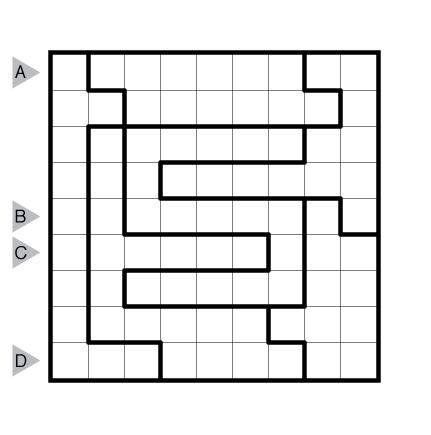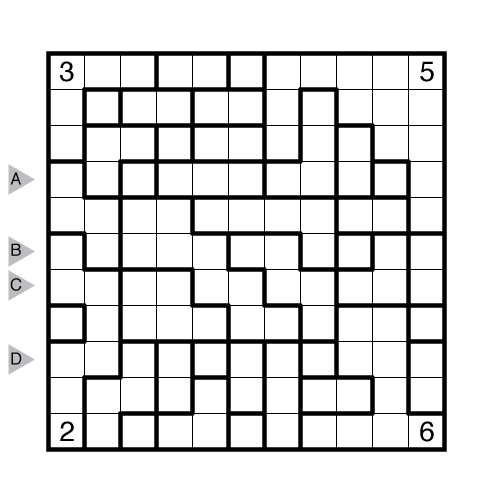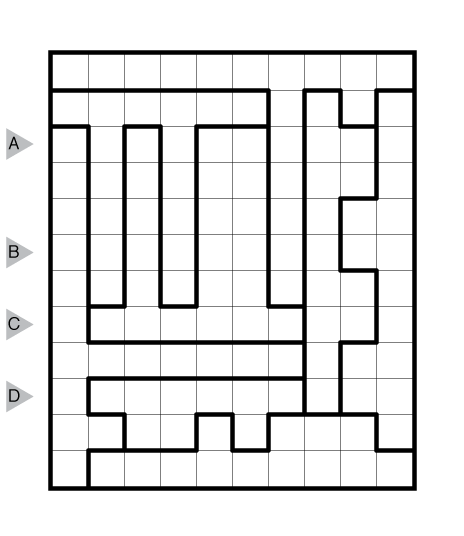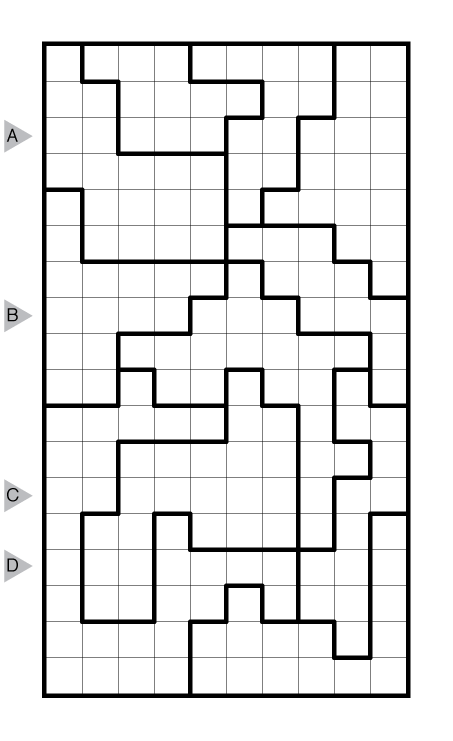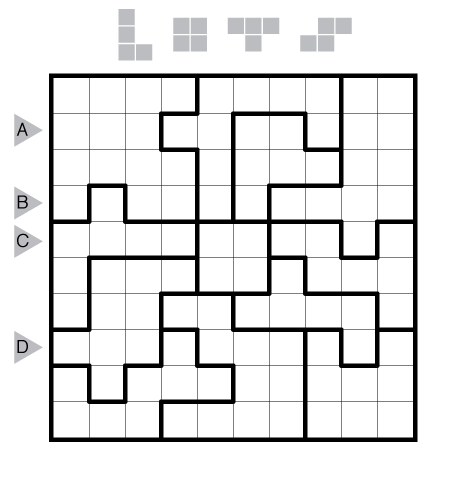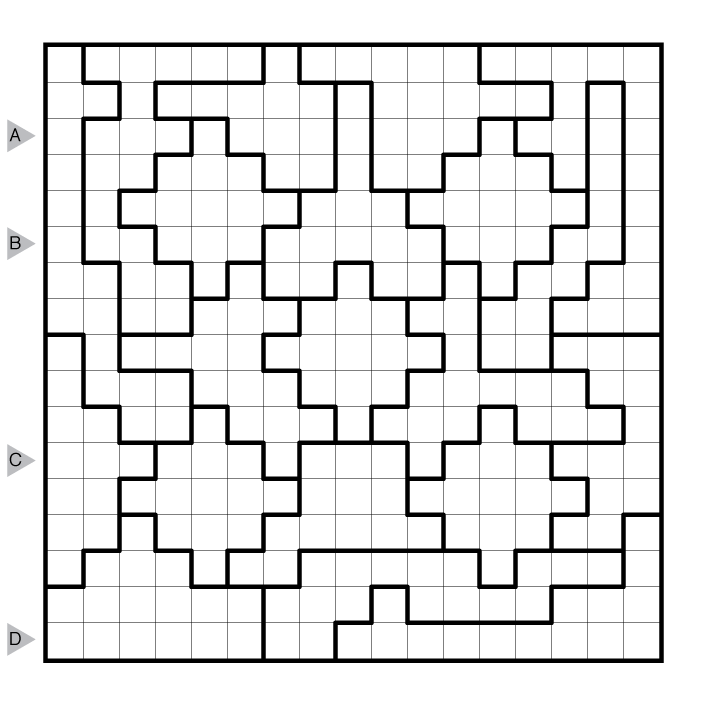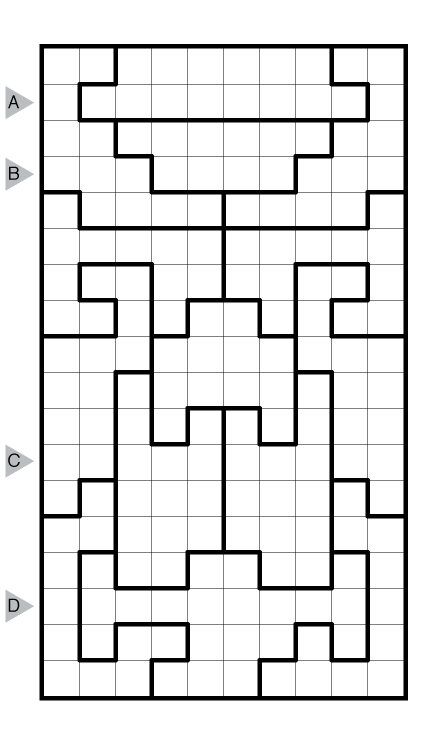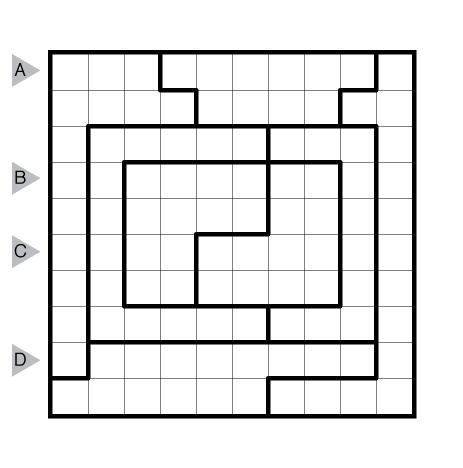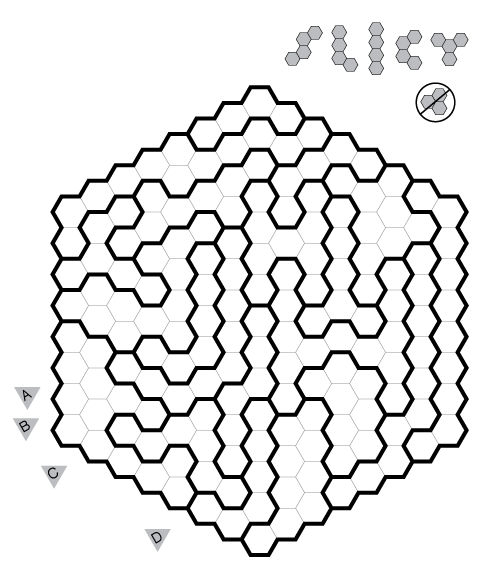Easy as LITS by Chris Green
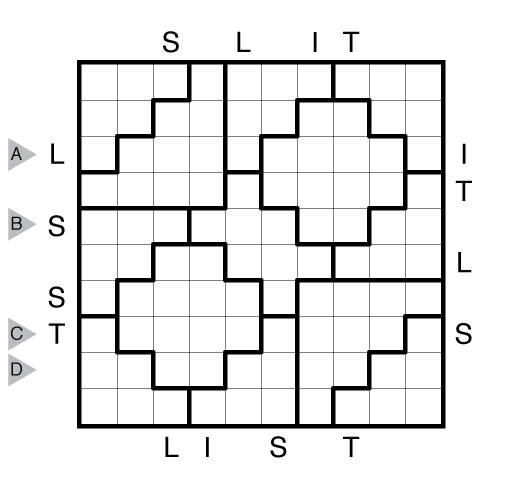
or solve online (using our beta test of Penpa-Edit tools)
Theme: Clue Symmetry and Logic
Author/Opus: This is the 10th puzzle from guest contributor Chris Green.
Rules: Standard LITS rules. Also, the letters outside the grid indicate the first tetromino encountered in the corresponding direction. Or see this:
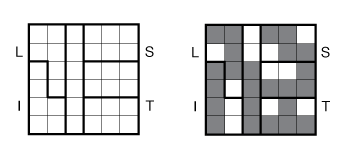
Answer String: Enter the length in cells of each of the shaded segments from left to right for the marked rows, starting at the top. Separate each row’s entry from the next with a comma.
Time Standards (highlight to view): Grandmaster = 3:00, Master = 4:00, Expert = 8:00
Solution: PDF
Note: Follow this link for more variations of LITS and this link for classic LITS. If you are new to this puzzle type, here are our easiest LITS to get started on.

